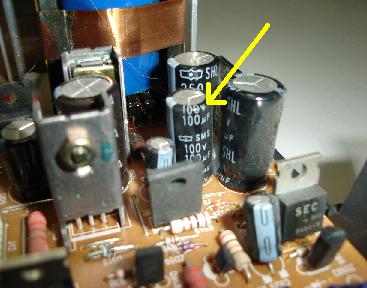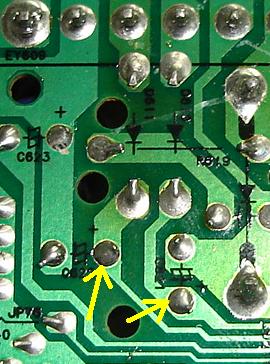Secrets To Use Line Voltage To Find Capacitor Working Voltage.
The electrolytic capacitor voltage labeled at its body play a very important part in electronic circuit. The voltage that present at the line connected to the positive side of the capacitor should not be exceeded, otherwise the capacitor may blow. If a capacitor blown, sleeve melted and the labeling missing, you may not know what are the values and ratings of a capacitor. You don’t have the information to find the capacitor replacement.
The capacitor info is important because you can’t simply substitute with another capacitor, if you use a wrong capacitor for replacement, the equipment either doesn’t work or the capacitor might explode! If you are a repair technician or engineer, I believe you have come across problems before where you do not know the exact voltage at certain part of a circuit.
A rating of 100 volt capacitor have about 50-70 volts at the line.
For example, a monitor came in with the problems of high voltage shutdown when switch on, you want to find out whether is the output voltages from the power supply that cause the problem or somewhere in the high voltage section ?. You don’t have any record about this particular monitor. You are also not sure whether all the output voltages are according to the specification of the monitor.
In order to find out the solution, what you need to do is to look at all the filter capacitor working voltage for each rail of the output voltages. If you are testing the line that have a filter capacitor of 25 volt connected to it then you can guest that the line voltage is somewhere between 13-19 volts! The line voltage cannot exceed the rating of filter capacitor because if exceeded the capacitor will get very hot and blow and sometimes smoke will comes out from the top casing.
Same situation when you are measuring the B+ line voltage reading of a TV or Computer Monitor. If you see a 47 microfarad 200 volt filter capacitor at the B+ line, your common sense will tell you that the line you are measuring must have a voltage between 120 volt to 160 volt. If you get 30 volts when measuring this line when power is on, automatically you will know that the line you are checking is under voltage! If you get 190 volts, definitely there is a problem in power supply and its related circuit.
Knowing the line voltage (marked with arrow pointers) will help you to locate the capacitor working voltage
The increase of the b+ line voltage was actually caused by a bad electrolytic with high esr value located at the feedback circuit of the Monitor. Identification of the line voltage will easily guide you to find the capacitor working voltage and if the capacitor burnt or missing, again using the line voltage will help you to find the right capacitor replacement.
|
|
Copyright@ 2006-2014-www.ElectronicRepairGuide.com All Rights Reserved

